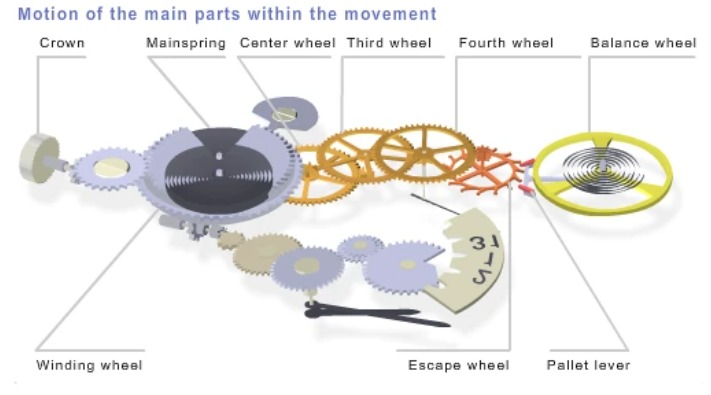What is a watch movement?
A watch movement (also known as a “calibre”) is the engine of a watch that acts as the powerhouse to make the watch and its functions operate.
How many watch movement types are there?
Well, this question has many answers, it all depends on who you ask. There are 3 main types of watch movements, Mechanical, Quartz and Eco.
Watches have come a long way from their humble beginnings as simple timekeeping devices. With the advancements in technology, different types of watch movements have emerged. These movements are responsible for the accurate timekeeping and functionality of a watch.
In this article, we will delve into the 3 main types of watch movements and discover what sets them apart.
Mechanical Movements: Mechanical movements are the oldest and most traditional type of watch movement in horology. They rely on a complex series of gears, springs, and levers to power the watch. The two main types of mechanical movements are manually wound (or “hand-winding”) and automatic.
a. Manual-Winding: Also known as hand-wound movements, these watches require manual winding by turning the crown. As you wind the watch, the mainspring stores energy, which is then gradually released to power the watch.
b. Automatic: Automatic movements, also called self-winding movements, utilize a rotor that oscillates with the natural movement of the wearer’s wrist. The watch gets its power from the movement of the wearer’s wrists and thus this motion winds the mainspring, eliminating the need for manual winding.

Quartz Movements: These movements are powered by a battery that sends an electric current through a small quartz crystal, causing it to vibrate at a precise frequency. This vibration is then converted into a steady pulse, which drives the movement of the watch hands. Quartz watches are known for their accuracy and reliability. These quartz watch movements are the most common today and for that reason, they are easy to maintain and use.

Solar-Powered Movements: Solar-powered movements are a modern innovation that harnesses the energy of light to power the watch. These watches have a solar panel beneath the dial, which converts both natural and artificial light into electrical energy. The energy is stored in a rechargeable battery, providing a continuous power source. Solar-powered watches are eco-friendly, require minimal maintenance, and are known for their longevity.


